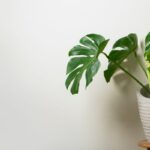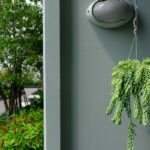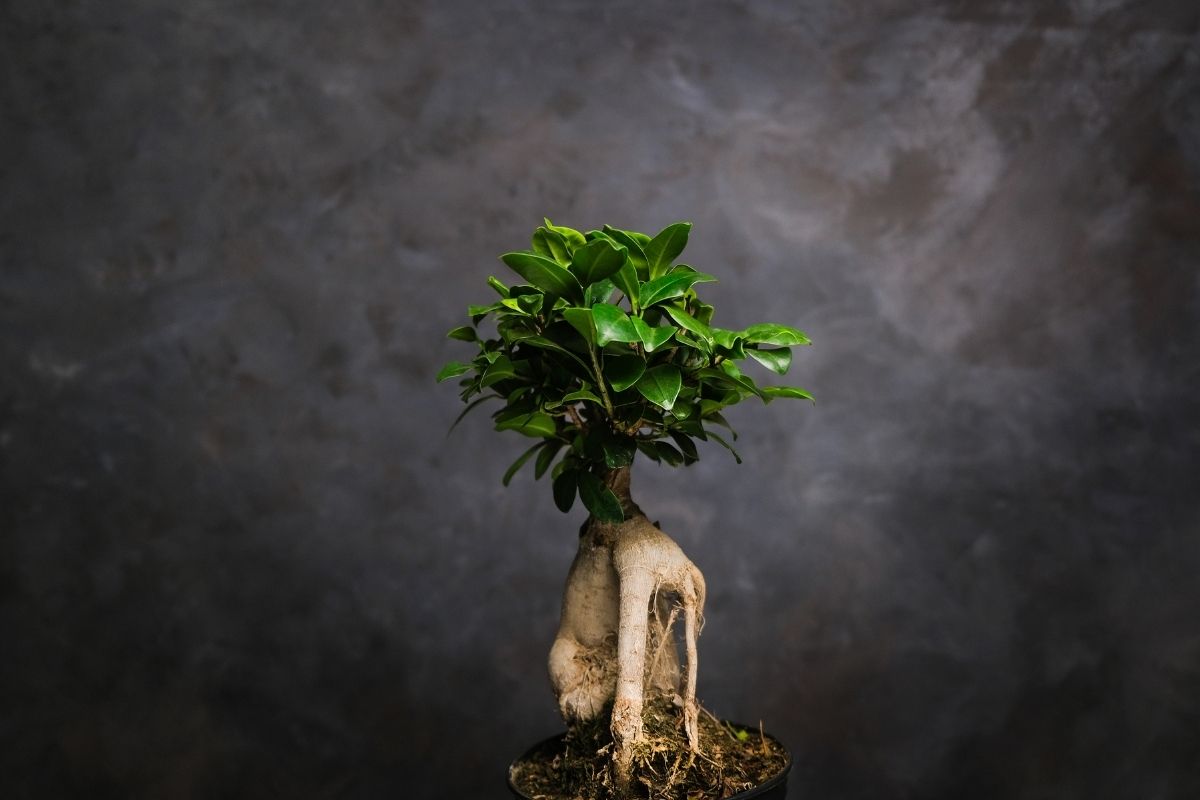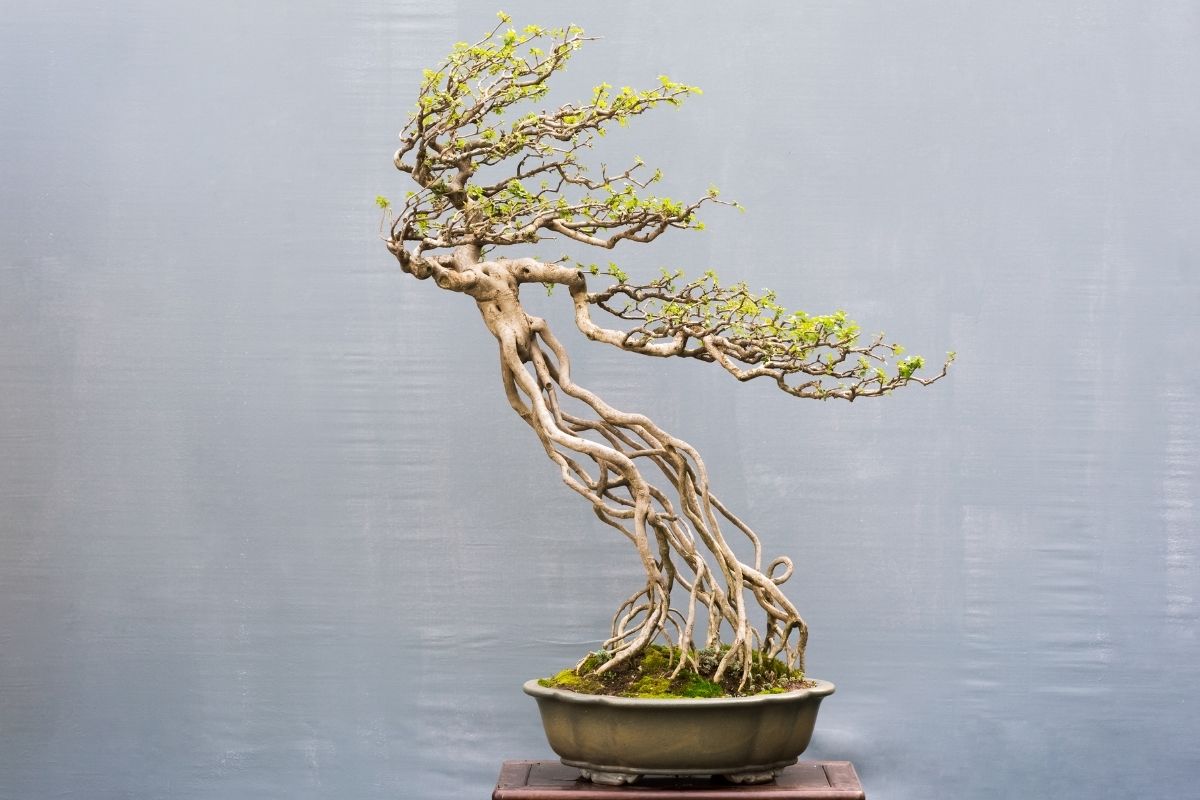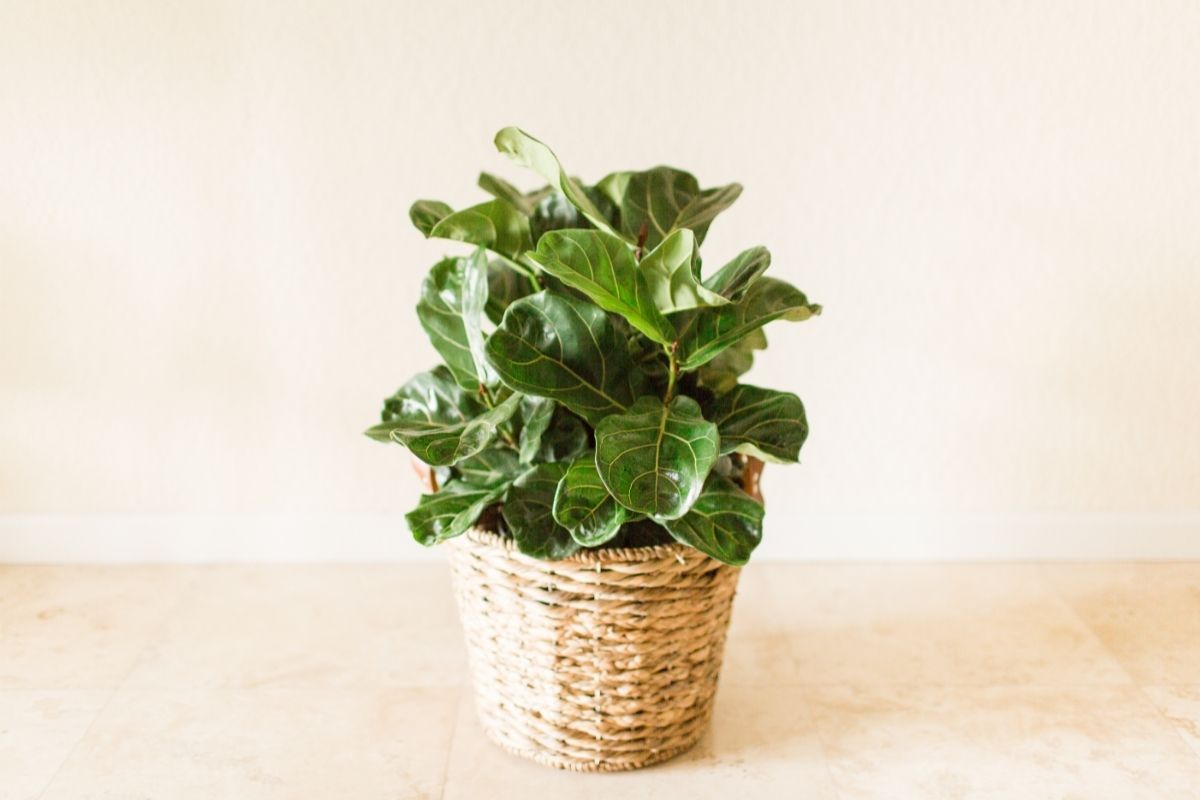In modern times, there have never been so many options and resources for gardeners and plant owners – with numerous species of plants, and all the tools and know-how to care for them, being available at the click of a button.
One popular example is the fiddle leaf fig, a charming plant that can be great both indoors and outdoors. But exactly what soil does the fiddle leaf fig need to grow, and what other special requirements does it have?
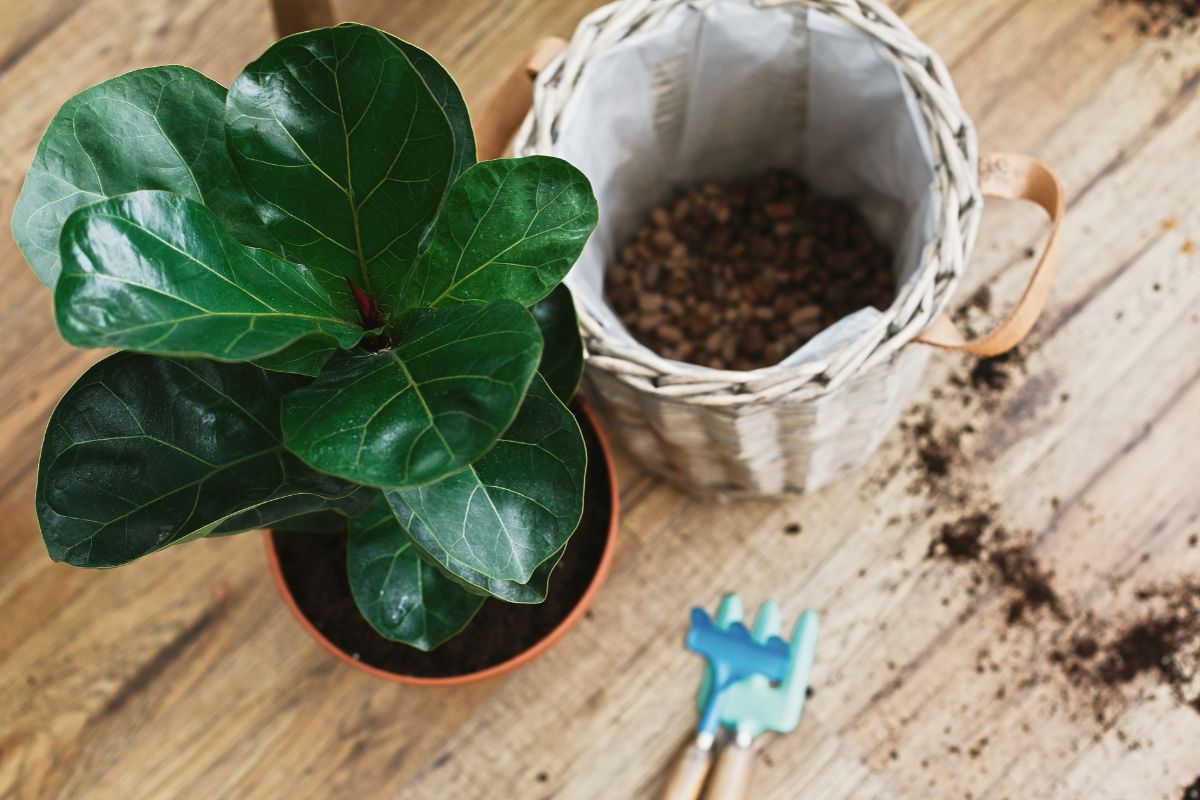
What Is A Fiddle Leaf Fig?
Also known as the Ficus Lyrata, the fiddle leaf fig is a species of flowering plant that is included within the Moraceae family – which also encompasses both figs and mulberry plants.
Originally from western Africa – specifically from Cameroon to Sierra Leone – the fiddle leaf fig has since become a popular plant all around the world, and is loved by many for its distinctive shape, aesthetic beauty, and its relative resilience – the latter of which makes it great for first time growers.
The plant takes its name from the shape of the leaves, which while variable, tend to be broad and flat with narrow middles – resembling a loot, lyre, or as the name suggests, a fiddle.
Where Should They Be Grown?
Generally speaking, fiddle leaf figs are only grown outside when the temperatures are right – which in this case is any environment that is tropical or subtropical, and matching the climes of its native west Africa.
However, for those living in colder environments (or hotter ones), the fiddle leaf fig plant can also make a great indoor plant that is relatively easy to grow and care for.
What Soil Requirements Do They Have?
When it comes to the fiddle leaf fig, there are certain requirements that it needs from the soil – all of which are important if it is to grow and continue to thrive to its full potential.
Humus Content
One thing that fiddle leaf figs require from their soil is a degree of humus for growing.
Not to be confused with the similarly sounding Middle Eastern chickpea dish, humus is actually a dark organic matter found in soil that is made from decomposing plant and animal matter deep within the earth.
Rich in nutrients, and able to allow the soil to retain a lot of water, humus is also commonly used as a soil conditioner of sorts – utilizing the natural, minerally rich compound to condition and treat existing soil and make it more suitable for growing.
As such, it is commonly used as a form of topsoil in most cases.
Humus is mainly a great source of potassium, carbon, and phosphorus – all of which provide something intrinsically important to the overall health of the plant, the strength of the roots, and raising the chances of a successful growth cycle.
Fast Drainage
Like most plants, fiddle leaf figs also require soil that allows for fast drainage of the water.
In the case of the fiddle leaf fig, this is because the plant requires just the right level of moisture in the soil -so as to mimic the conditions of west Africa.
This can also be aided by a large pot, which will grant more room for drainage, more room for moisture dispersal, and more room for the roots of the plant to breathe.
This also helps to avoid sogginess and wetness, which could lead to things like root rot and other plant conditions.
Balanced Soil pH
The pH level of the soil also needs to be around 7 on the pH scale, ensuring that it is perfectly balanced and not too acidic or alkali.
pH 7 is actually considered ‘neutral’ on the scale, and this is key to maintaining the health and success of the fiddle leaf fig plant.
What Are The Best Soil Types?
However, like all plants, the fiddle leaf fig requires certain soil types to enable it to grow and thrive to maturity.
Perlite
One of the best kinds of soil you can use for potting fiddle leaf figs is perlite – a volcanic mineral that is naturally occuring and and has water trapped inside of it.
Lightweight and highly porous, perlite is great for improving water drainage, aeration, and is also great for providing insulation to the plant.
Perlite can either be used alone, or it can be mixed with substances like clay and organic soil types to improve the overall quality, and lessen the time it takes for growth and rooting to take place.
Peat Moss
You can also use peat moss, which while usually used for starting off new seeds, can also be a great soil to pot your fiddle leaf fig plant once it is already established.
However, this should never be used alone, as peat moss is low in nutrients, and considered one of the poorer providers of nutrients and minerals.
That being said, something it is really good for is retaining moisture, and then releasing it whenever the plant itself requires it – making it great for those who are forgetful when it comes to watering, or for those who live in hotter climates where each watering session needs to stretch out as long as humanly possible.
Peat moss also helps to hold the nutrients in the soil – something that is beneficial, as nutrients can sometimes get washed off during watering.
Compost
One of the most common forms of soil, and one that is highly beneficial for the fiddle leaf fig, is compost.
As with peat moss, this is perhaps not great as a solo form of soil, and would in fact work better in tandem with other varieties.
This is because of the sheer aeration that compost has, which can hinder water retention when used without being mixed. This is especially true with 100% compost, which is highly ineffective by itself.
The best mixing ratio is one part compost, and four parts regular soil. This way the soil gets all the moisture and nutrients it needs, without risking the plant going dry and not getting what it needs.
The main benefit of compost is how rich in nutrients it actually is – especially potassium, nitrogen, calcium, magnesium, phosphorus, and sodium – all of which are highly beneficial for strengthening the plant, providing the energy needed for growth, and ensuring that it will thrive.
Perlite-Peat Moss Mix
Last, but by no means least, one of the other best varieties of soil you can use for potting your fiddle leaf fig is a perlite-peat moss mix.
This is a common variety, and one that offers the best of both worlds when it comes to nutrient content, aeration, water retention, and drainage.
To make this even better, you could also add organic soil to the mix. This will give your plant the best shot at thriving, and when used in a 1:1:2 ratio can prove really effective.
The peat moss itself is essential for establishing a balanced pH, the potting soil is great for absorbing water and improving drainage, and as such there is an overall less likely chance of rot, malnourishment, or insect infestations of the plant.
Can You Use Other Soil Types?
For many people, especially those new to gardening and plant ownership, all forms of soil might seem the same – and they might not think there are much differences between the different varieties.
Potting Soil
As such, they might consider using regular soil to fill their fiddle leaf fig pot, and while this is not as recommended as the types of soil mentioned above, they do actually allow the plant to thrive on some level.
This is because regular soil contains several key elements that are helpful for plant growth – namely composted sawdust, pine bark, and peat moss, which as mentioned above, can be quite beneficial.
Succulent Soil
Succulent soil is also an option for potting fiddle leaf figs, namely because it contains many of the same minerals, nutrients, and components as the above mentioned suggestions.
The soil is also good for drainage, and holding moisture, which makes it a great choice for harsher, drier landscapes. As such, it makes it a good choice for home growers who live in hotter climates.
Why Is pH Important?
The pH scale refers directly to the acidity and alkalinity of the soil (or any other substance), and the pH scale is used to measure the amounts of both within any specific substance.
When we look at the scale, 1-5.5 refers to acidity, 5.5-7 is considered neutral, while 7-14 is for alkalines. However, while this might seem confusing, there are actually several reasons why soil pH is important for plant growth.
Nutrient Absorption
Firstly, the level of pH in the soil can seriously affect how well the plant can absorb nutrients that are either in the soil already, or that are fed to it during feeding.
There are seventeen essential minerals needed for good plant growth.
Three of these, hydrogen, oxygen, and carbon, all come from the air, so they are generally safe, however, the others come from the soil, and as such their survival and usability depends entirely on the soil environment.
The other minerals, and the soil pH types they prefer are:
- Phosphorus – neutral soil
- Magnesium – neutral soil
- Boron – acidic soil
- Potassium – neutral soil
- Manganese – acidic soil
- Copper – acidic soil
- Molybdenum – alkaline soil
- Calcium – neutral soil
- Nitrogen – neutral soil
- Iron – acidic soil
Reaching Nitrogen Sources
Around 6.8 pH is roughly the ideal for most gardens and plants, and this is because they need to be able to reach nutrients in the soil.
Some, like nitrogen, are located further into the soil than other nutrients, which means that the soil needs to be at the right, neutral pH to enable the nitrogen to be absorbed.
Even if the garden is rich in nitrogen, your plants will still not get what they need if the pH is too low. As such, proper monitoring of soil pH is essential for success as a gardener.
Avoiding Nutrient Deficiencies
Monitoring the pH means you can detect any deficiencies that your plants seem to have, and that you can then correct the mistake before any damage is done to the plant.
Affecting Bacteria Levels
Having the right pH level can also help to keep bad bacteria away from your plants, and ensure that they remain strong and thriving for longer with the help of friendly bacteria.
Some can be beneficial, and others can be to the detriment of the plant. However, by neutralizing (or correcting) the soil, you can usually eliminate these problems before they rear their ugly heads.
One of the few forms of bacteria that are the most resilient to pH changes are varieties of fungus, and in this case other action might be needed to fix the problem.

How To Check Soil pH?
When it comes to checking the pH of your soil, the process couldn’t be simpler.
With A Testing Kit
The first thing you can try is to buy a home sampling kit. These are usually pretty inexpensive, and can be relatively easy to understand. What’s more, they can usually be found in most good hardware stores and garden centers.
Using A Meter
Alternatively, you could also use a professional meter to measure the pH levels of the soil. However this is usually a little more expensive, and is only really beneficial if you are a commercial grower.
Taking A Sample
If you have the time, contacts, and the money, then you could take a small soil sample and send it into a laboratory for testing.
As you might imagine, this usually costs a little bit more, and takes a lot more time for the results to come back. As such, this is only beneficial if you have a persistent problem, or if you are at a loss.
How Is pH Measured?
On the pH scale, the acidity and alkalinity of substances are measured using a color scale – with red being full acidity (representing 1 numerically), and purple being full alkalinity (14 numerically).
The acidity scale then fades from red, to orange, to yellow, while the alkalinity scale fades from purple to blue to light blue.
For neutral colors, the test will usually show a shade of green/yellow, green, or green/blue, and in most cases this is the sweet spot you should be aiming at for healthy, balanced soil.
Buyer’s Guide
Now that we know a little more about the best soil for your fiddle leaf fig plant, it is now time to examine some more factors you should consider when purchasing your soil – all of which are both important for the overall performance of the plant, and for your wallet too.
Quality
As you can see above, the fiddle leaf fig plant has certain specifications that it needs from its soil, and as such, you need to ensure that the soil of your choosing meets these important requirements.
Quantity
You also want to ensure that you get the most bang for your buck.
Luckily there are plenty of varieties and options on the marketplace today, meaning that you can get an amount that services your needs without having to break the bank too.
Price
The price is obviously an important factor for many people, and soil is no exception.
While soil can be quite expensive in some cases – especially if it is specialized or of high quality – there are still plenty of cheaper options out there to ensure that you can make the right decision for you.
Final Thoughts
And there we have it, everything you need to know about the fiddle leaf fig, what special requirements it has, and the best soil to help it grow and thrive.
It’s certainly true that plant ownership has become more popular in recent years – with more and more people looking to spruce up their gardens and homes with lush, green plantlife.
And who could blame them, especially when there are so many resources available to teach us everything we need to make them grow.
So if you have a fiddle leaf fig, then be sure to use these varieties of soil. Something tells me you won’t be disappointed!
Frequently Asked Questions
Now that we know a little more about the fiddle leaf fig, and the kinds of soil that work best for growing, we will now answer some frequently asked questions that you might be interested in.
While there are plenty of cheaper varieties on the market, the more upmarket soil laden with nutrients can indeed be more expensive. As such, you need to carefully consider your choices before purchasing.
Without the proper nutrient combination, you might have trouble with the fiddle leaf fig. However, once it has reached a good size, it is considered one of the tougher and more resilient plants you can own.
- Best Hanging Plant For Low Light - September 4, 2023
- Best Indoor Plants Florida - August 28, 2023
- Best Plants For Bathroom Smells - August 21, 2023

